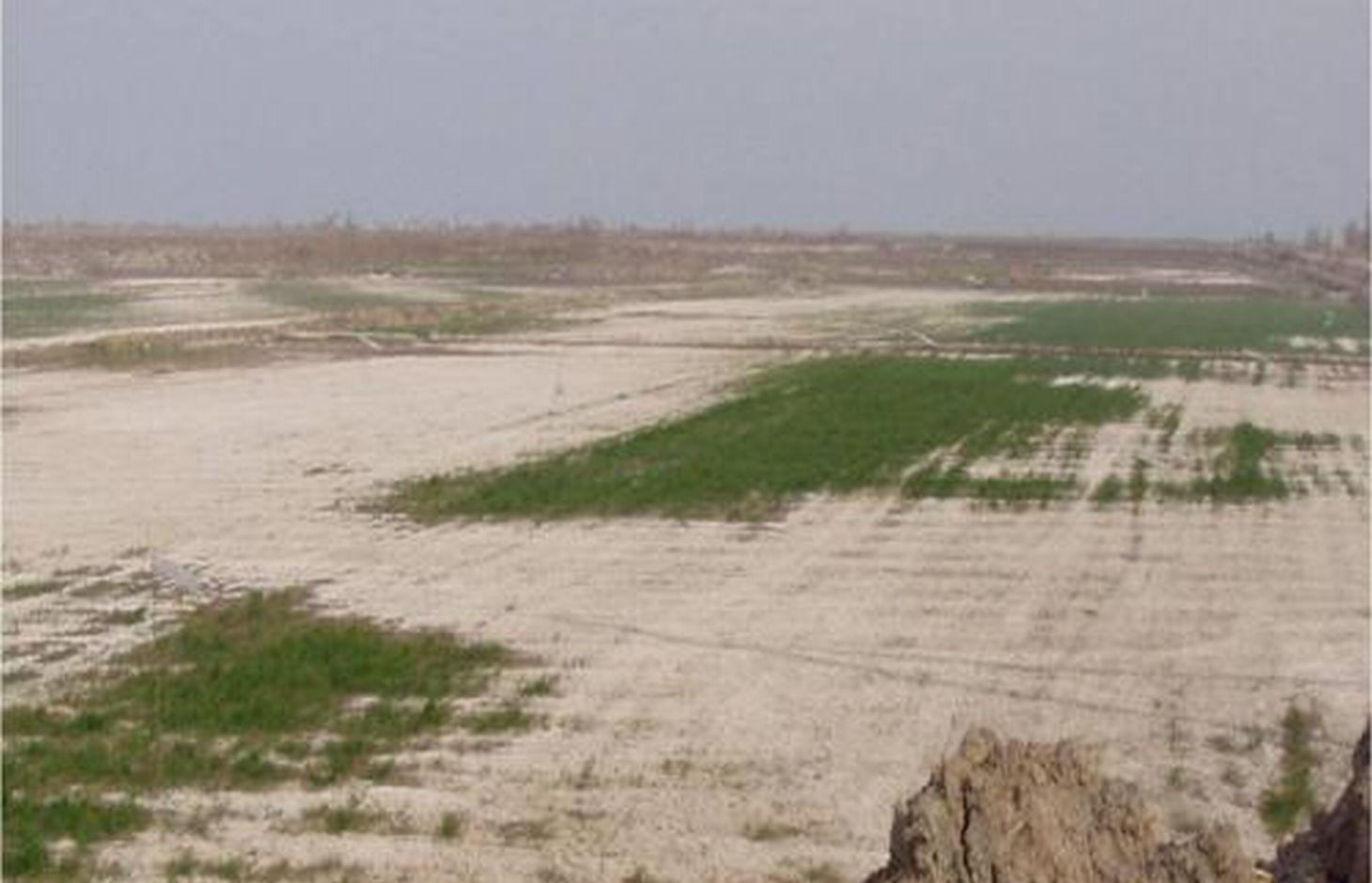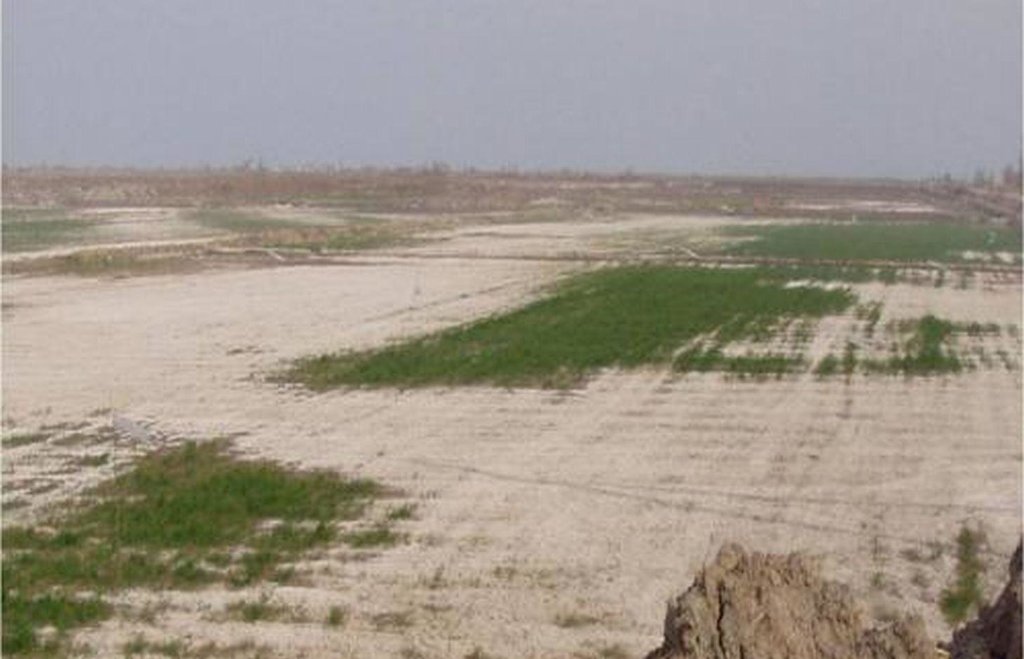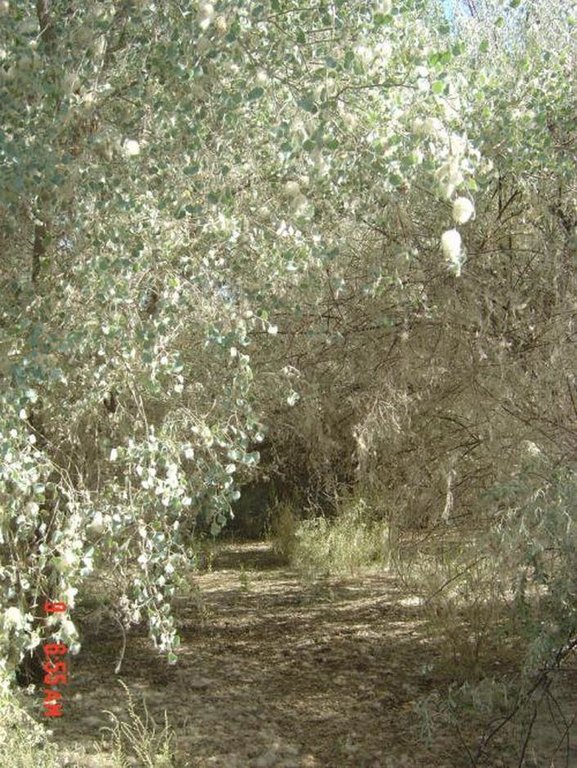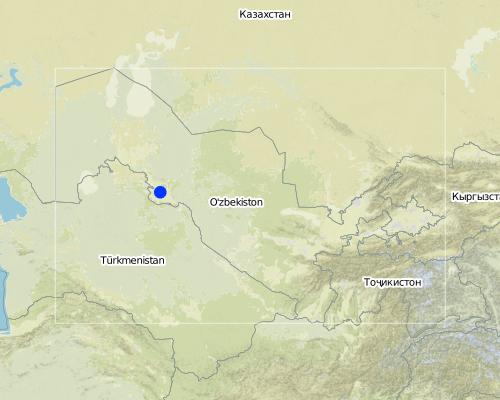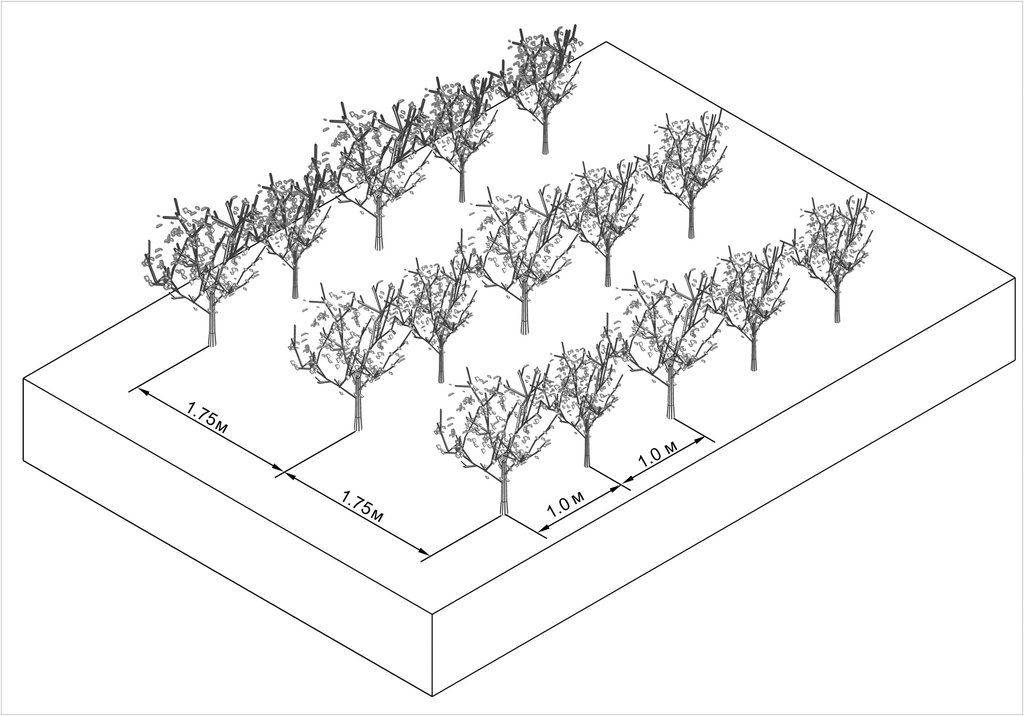Агролесная мелиорация для реабилитации деградированных орошаемых земель (ИСЦАУЗР) [Uzbekistan]
- Creation:
- Update:
- Compiler: Rustam Ibragimov
- Editor: –
- Reviewer: David Streiff
Инициатива Стран Центральной Азии по Управлению Земельными Ресурсами (ИСЦАУЗР)
technologies_1533 - Uzbekistan
- Full summary as PDF
- Full summary as PDF for print
- Full summary in the browser
- Full summary (unformatted)
- Агролесная мелиорация для реабилитации деградированных орошаемых земель (ИСЦАУЗР): April 28, 2017 (inactive)
- Агролесная мелиорация для реабилитации деградированных орошаемых земель (ИСЦАУЗР): Aug. 2, 2017 (inactive)
- Агролесная мелиорация для реабилитации деградированных орошаемых земель (ИСЦАУЗР): Aug. 22, 2019 (inactive)
- Агролесная мелиорация для реабилитации деградированных орошаемых земель (ИСЦАУЗР): Nov. 25, 2019 (public)
View sections
Expand all Collapse all1. General information
1.2 Contact details of resource persons and institutions involved in the assessment and documentation of the Technology
SLM specialist:
Germany
Name of the institution(s) which facilitated the documentation/ evaluation of the Technology (if relevant)
Central Asian Countries Initiative for Sustainable Land Management - Multicountry Capacity Building (CACILM - MCB) - KyrgyzstanName of the institution(s) which facilitated the documentation/ evaluation of the Technology (if relevant)
Research Institute of Karakul Breeding and Desert Ecology of Uzbekistan - UzbekistanName of the institution(s) which facilitated the documentation/ evaluation of the Technology (if relevant)
Center for Development Research (ZEF) (Center for Development Research (ZEF)) - Germany1.3 Conditions regarding the use of data documented through WOCAT
When were the data compiled (in the field)?
29/09/2011
The compiler and key resource person(s) accept the conditions regarding the use of data documented through WOCAT:
Ja
2. Description of the SLM Technology
2.1 Short description of the Technology
Definition of the Technology:
На участке пахотной земли, не используемой из-за сильного засоления и заболачивания, создается плантация из солеустойчивых древесных пород, преимущественно с азотофиксирующей и высокой биодренажной способностью
2.2 Detailed description of the Technology
Description:
В Узбекистане немало участков деградированных (маргинальных) пахотных земель, использование которых под основные культуры нерентабельно, и даже убыточно. Посадка многоцелевых древесных пород на таких землях способствуют восстановлению почвенного плодородия и возвращению их в систему сельскохозяйственного использования. Заброшенные земли начинают приносить определенную финансовую выгоду, обеспечивая население топливной и строительной древесиной, лекарственными средствами, съедобными плодами, скот - лиственным кормом и др. продукцией. Продуманный подбор пород обеспечивает экологические услуги, такие как снижение заболачивания через транспирацию (биодренаж) и контроль засоления почв; азотофиксирующая способность отдельных пород обогащает почву азотом, а лиственный опад – гумусом. В долгосрочной перспективе после использования древесных насаждений участки можно снова вернуть в категорию пашни (последовательное агролесоводство) или продолжить использовать их под лесные насаждения. (в рамках ИСЦАУЗР)
Purpose of the Technology: Повышение продуктивности сельскохозяйственных земель, реабилитация агроэкосистем и улучшение средств к существованию в сельской местности путем внедрения древесных плантаций в сельскохозяйственные угодья.
Establishment / maintenance activities and inputs: Главным при создании древесных плантаций на маргинальных землях - подбор многоцелевых древесных пород по совокупности критериев, главные из которых – соле- и засухоустойчивость, высокая биодренажная и азото- фиксирующая способность. Для Хорезма рекомендуются 3 породы: азотофиксирующая порода лох узколистный (Elaeagnus angustifolia), быстрорастущая порода туранга (Populus euphratica) и долговечная порода - вяз приземистый (Ulmus pumila).
Подготовка земли включает планировку участка, вспашку и промывку земель от засоления. Саженцы различных пород высаживают по схеме 1х1.75м чистыми рядами, с чередованием пород через каждые 5-7 рядов. Густая посадка позволяет уже в первые годы собирать биомассу (на топливо, лиственный корм) путем прореживания. Постепенно ширина междурядий увеличивается до 3-5 м. В дальнейшем, биомассу получают путем рациональной обрезки кроны. Поливы осуществляются в течение первых 2-х лет сниженными нормами (на 10-30%). В дальнейшем поливы прекращают, и деревья используют грунтовые воды.
Natural / human environment: Технология адаптирована к условиям Хорезмской области Узбекистана, древнего орошаемого оазиса, с крайне выположенным рельефом и затрудненными условиями оттока грунтовых вод. В силу природных условий и неправильного использования водных и земельных ресурсов почвы подвержены засолению и заболачиванию. Основное занятие населения – возделывание хлопчатника, озимой пшеницы, овощных и бахчевых культур на орошаемых землях. Основные землепользователи – фермеры, владеют землей на основе долгосрочной аренды.
2.3 Photos of the Technology
2.5 Country/ region/ locations where the Technology has been applied and which are covered by this assessment
Country:
Uzbekistan
Region/ State/ Province:
Узбекистан
Further specification of location:
Хорезмская область/ Янгибазарский район
Map
×2.6 Date of implementation
If precise year is not known, indicate approximate date:
- less than 10 years ago (recently)
2.7 Introduction of the Technology
Specify how the Technology was introduced:
- through projects/ external interventions
Comments (type of project, etc.):
Внедрена в рамках проекта ЦЕФ/Бонн/ЮНЕСКО/Ургенчский университет в 2003году
3. Classification of the SLM Technology
3.1 Main purpose(s) of the Technology
- improve production
- reduce, prevent, restore land degradation
3.2 Current land use type(s) where the Technology is applied
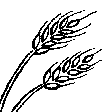
Cropland
- Annual cropping
- Tree and shrub cropping
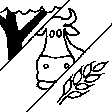
Mixed (crops/ grazing/ trees), incl. agroforestry
- Agro-pastoralism
Comments:
Major land use problems (compiler’s opinion): Сложность восстановления засоленных маргинальных земель общепринятыми методами зимне-весенних промывок
Major land use problems (land users’ perception): Трудно избавиться от засоления
Mixed: (eg agro-pastoralism, silvo-pastoralism): преобладают коровы, козы
Grazingland comments: в орошаемой зоне скот выпасается на полосах отчуждения вдоль арыков, дорог, коллекторов. Специальных пастбищ для выпаса нет.
Future (final) land use (after implementation of SLM Technology): Mixed: Mf: Agroforestry
Type of cropping system and major crops comments: 70-80% орошаемой пашни занято под хлопчатник и оз.пшеницу почти в одинаковой пропорции
Livestock is grazing on crop residues
Type of grazing system comments: в орошаемой зоне скот выпасается на полосах отчуждения вдоль арыков, дорог, коллекторов. Специальных пастбищ для выпаса нет.
If land use has changed due to the implementation of the Technology, indicate land use before implementation of the Technology:
Cropland: Ca: Annual cropping
3.3 Further information about land use
Water supply for the land on which the Technology is applied:
- full irrigation
Number of growing seasons per year:
- 1
Specify:
Longest growing period in days: 230
Longest growing period from month to month: октябрь-июнь оз.пшеница
Second longest growing period in days: 160
Second longest growing period from month to month: июль-октябрь
3.4 SLM group to which the Technology belongs
- improved ground/ vegetation cover
- improved plant varieties/ animal breeds
3.5 Spread of the Technology
Specify the spread of the Technology:
- evenly spread over an area
Comments:
Total area covered by the SLM Technology is 0,02 m2.
Участок пахотной земли, выведенный из сельскохозяйственного использования по причине сильного засоления и заболачивания.
3.6 SLM measures comprising the Technology
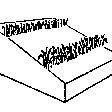
vegetative measures
- V1: Tree and shrub cover
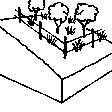
management measures
- M1: Change of land use type
Comments:
Main measures: vegetative measures, management measures
Type of vegetative measures: урегулированный: -линейныи
3.7 Main types of land degradation addressed by the Technology
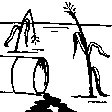
chemical soil deterioration
- Cn: fertility decline and reduced organic matter content (not caused by erosion)
- Cs: salinization/ alkalinization
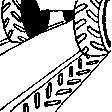
physical soil deterioration
- Pw: waterlogging
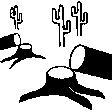
biological degradation
- Bl: loss of soil life
Comments:
Main type of degradation addressed: Ха (Cn): снижение плодородия почвы и органических веществ в почве (не вызванные эрозией), Фз (Pw): заболачивание, Бж (Bl): потеря жизни в почвe
Secondary types of degradation addressed: Хс (Cs): засоление / осолонцевание
Main causes of degradation: другие причины, вызванные человеческой деятельностью (укажите) (неадекватная работа искусственного дренажа, несоблюдение норм полива), другие природные причины (лавина, извержение вулкана, сели, высоко уязвимые природные ресурсы, экстремальная топография и т.д.) укажите какие (крайне затрудненные условия оттока грунтовых вод в силу выположенного рельефа (практически без уклона)), бедность / богатство (недостаточно финансов на реабилитацию и обслуживание ирригационной и дренажной инфраструктуры)
Secondary causes of degradation: управление землеи (нарушение агротехнических приемов обработки почвы), образование, доступ к знаниям и поддерживающие услуги (низкий потенциал землепользователей)
3.8 Prevention, reduction, or restoration of land degradation
Specify the goal of the Technology with regard to land degradation:
- restore/ rehabilitate severely degraded land
Comments:
Main goals: rehabilitation / reclamation of denuded land
Secondary goals: prevention of land degradation, mitigation / reduction of land degradation
4. Technical specifications, implementation activities, inputs, and costs
4.1 Technical drawing of the Technology
4.2 Technical specifications/ explanations of technical drawing
Саженцы различных пород высаживаются по схеме 1х1,75 чистыми рядами с чередованием пород через 5-7 рядов. В результате постепенного прореживания с целью сбора биомассы ширина междурядий достигнет 3-5 м, что вполне приемлемо для взрослых деревьев
Location: Янгибазар. Янгибазарский район/ Хорезмская область
Date: 20-09-2011
Technical knowledge required for field staff / advisors: средний
Technical knowledge required for land users: средний
Main technical functions: улучшение земляного покрова, повышение органического вещества, повышение наличия питательных веществ (снабжение, переработка отходов,...), повышение биомассы (количество)
Aligned: -linear
Vegetative material: Ф: фруктовые деревья / кустарники
Number of plants per (ha): 5714
Vertical interval between rows / strips / blocks (m): 0,0001
Spacing between rows / strips / blocks (m): 1,75
Width within rows / strips / blocks (m): 1,0
Scattered / dispersed
Vegetative material: К: многолетние культуры
Trees/ shrubs species: туранга (P.euphratica) и вяз приземистый (U.pumila), посажены
Fruit trees / shrubs species: лох узколистый (E.angustifolia), посажены
Slope (which determines the spacing indicated above): 0,01%
Change of land use type: пахотные земли стали плантацией многолетних древесных насаждений
4.3 General information regarding the calculation of inputs and costs
Specify currency used for cost calculations:
- US Dollars
other/ national currency (specify):
Узбекский сум
Indicate average wage cost of hired labour per day:
10.00
4.4 Establishment activities
| Activity | Type of measure | Timing | |
|---|---|---|---|
| 1. | Планировка | Vegetative | Осень |
| 2. | Вспашка | Vegetative | Осень |
| 3. | Промывка | Vegetative | Февраль-Март |
| 4. | Чизелевание | Vegetative | Март |
| 5. | Посадка | Vegetative | Март |
4.5 Costs and inputs needed for establishment
| Specify input | Unit | Quantity | Costs per Unit | Total costs per input | % of costs borne by land users | |
|---|---|---|---|---|---|---|
| Labour | None | None | 1.5 | 9.6 | 14.4 | 100.0 |
| Labour | None | None | 1.5 | 19.266 | 28.9 | 100.0 |
| Labour | None | None | 4.4 | 2.75 | 12.1 | 100.0 |
| Labour | None | None | 1.0 | 11.6 | 11.6 | 100.0 |
| Plant material | None | None | 5714.0 | 0.57777 | 3301.38 | |
| Construction material | None | None | 0.5 | 11.6 | 5.8 | 100.0 |
| Construction material | None | None | 115.0 | 1.507 | 173.3 | |
| Total costs for establishment of the Technology | 3547.48 | |||||
Comments:
Duration of establishment phase: 3 month(s)
4.6 Maintenance/ recurrent activities
| Activity | Type of measure | Timing/ frequency | |
|---|---|---|---|
| 1. | Поливы и уход | Vegetative | В вегетацию/5-6 раз |
4.7 Costs and inputs needed for maintenance/ recurrent activities (per year)
| Specify input | Unit | Quantity | Costs per Unit | Total costs per input | % of costs borne by land users | |
|---|---|---|---|---|---|---|
| Labour | None | None | 270.0 | 0.963 | 260.01 | 100.0 |
| Labour | None | None | 6.0 | 3.133 | 18.8 | 100.0 |
| Total costs for maintenance of the Technology | 278.81 | |||||
Comments:
Machinery/ tools: с/х машины
Стоимость подсчитана на 1 га (на уровень 2009г.). Текущие затраты определены исходя из того, что в течение 9 месяцев 1 человек будет ухаживать и поливать. Через 2 года поливы прекращают и в дальнейшем деревья предоставляются естественной среде обитания.
4.8 Most important factors affecting the costs
Describe the most determinate factors affecting the costs:
Наибольшие затраты относятся к покупке саженцев. Стоимость наемного труда для посадки также высока. Однако, традиционное - коллективное добровольное оказание помощи друг другу в проведении каких-либо мероприятий («хашар») может значительно удешевить посадку
5. Natural and human environment
5.1 Climate
Annual rainfall
- < 250 mm
- 251-500 mm
- 501-750 mm
- 751-1,000 mm
- 1,001-1,500 mm
- 1,501-2,000 mm
- 2,001-3,000 mm
- 3,001-4,000 mm
- > 4,000 mm
Agro-climatic zone
- semi-arid
Thermal climate class: temperate. 4 месяца t возд <5оС и 7 мес. t возд. выше 10 оС
5.2 Topography
Slopes on average:
- flat (0-2%)
- gentle (3-5%)
- moderate (6-10%)
- rolling (11-15%)
- hilly (16-30%)
- steep (31-60%)
- very steep (>60%)
Landforms:
- plateau/plains
- ridges
- mountain slopes
- hill slopes
- footslopes
- valley floors
Altitudinal zone:
- 0-100 m a.s.l.
- 101-500 m a.s.l.
- 501-1,000 m a.s.l.
- 1,001-1,500 m a.s.l.
- 1,501-2,000 m a.s.l.
- 2,001-2,500 m a.s.l.
- 2,501-3,000 m a.s.l.
- 3,001-4,000 m a.s.l.
- > 4,000 m a.s.l.
5.3 Soils
Soil depth on average:
- very shallow (0-20 cm)
- shallow (21-50 cm)
- moderately deep (51-80 cm)
- deep (81-120 cm)
- very deep (> 120 cm)
Soil texture (topsoil):
- medium (loamy, silty)
- fine/ heavy (clay)
Topsoil organic matter:
- low (<1%)
5.4 Water availability and quality
Ground water table:
on surface
Availability of surface water:
excess
Water quality (untreated):
for agricultural use only (irrigation)
5.5 Biodiversity
Species diversity:
- low
5.6 Characteristics of land users applying the Technology
Market orientation of production system:
- mixed (subsistence/ commercial
Off-farm income:
- less than 10% of all income
Individuals or groups:
- individual/ household
Level of mechanization:
- manual work
- mechanized/ motorized
Gender:
- men
Indicate other relevant characteristics of the land users:
Land users applying the Technology are mainly common / average land users
Population density: 200-500 persons/km2
Annual population growth: 1% - 2%
5.7 Average area of land owned or leased by land users applying the Technology
- < 0.5 ha
- 0.5-1 ha
- 1-2 ha
- 2-5 ha
- 5-15 ha
- 15-50 ha
- 50-100 ha
- 100-500 ha
- 500-1,000 ha
- 1,000-10,000 ha
- > 10,000 ha
Is this considered small-, medium- or large-scale (referring to local context)?
- medium-scale
Comments:
Average area of land owned or leased by land users applying the Technology: 5-15 ha, 15-50 ha, 50-100 ha
5.8 Land ownership, land use rights, and water use rights
Land ownership:
- state
Land use rights:
- leased
- individual
Comments:
Фермеры владеют землей на основе долгосрочной (50 лет) аренды без права продажи и передачи по наследству. В дехканских хоз-вах (до 2 га) земля в индивидуальной собственности
5.9 Access to services and infrastructure
health:
- poor
- moderate
- good
education:
- poor
- moderate
- good
technical assistance:
- poor
- moderate
- good
employment (e.g. off-farm):
- poor
- moderate
- good
markets:
- poor
- moderate
- good
energy:
- poor
- moderate
- good
roads and transport:
- poor
- moderate
- good
drinking water and sanitation:
- poor
- moderate
- good
financial services:
- poor
- moderate
- good
6. Impacts and concluding statements
6.1 On-site impacts the Technology has shown
Socio-economic impacts
Production
wood production
production area
energy generation
Water availability and quality
demand for irrigation water
Income and costs
farm income
diversity of income sources
Socio-cultural impacts
health situation
cultural opportunities
Ecological impacts
Water cycle/ runoff
excess water drainage
Soil
soil cover
nutrient cycling/ recharge
soil organic matter/ below ground C
Biodiversity: vegetation, animals
biomass/ above ground C
Other ecological impacts
6.2 Off-site impacts the Technology has shown
impact of greenhouse gases
6.3 Exposure and sensitivity of the Technology to gradual climate change and climate-related extremes/ disasters (as perceived by land users)
Gradual climate change
Gradual climate change
| Season | Type of climatic change/ extreme | How does the Technology cope with it? | |
|---|---|---|---|
| annual temperature | increase | not known |
Climate-related extremes (disasters)
Meteorological disasters
| How does the Technology cope with it? | |
|---|---|
| local rainstorm | not known |
| local windstorm | not known |
Climatological disasters
| How does the Technology cope with it? | |
|---|---|
| drought | not known |
Hydrological disasters
| How does the Technology cope with it? | |
|---|---|
| general (river) flood | not known |
Other climate-related consequences
Other climate-related consequences
| How does the Technology cope with it? | |
|---|---|
| reduced growing period | not known |
| понижение уровня грунтовых вод | not well |
Comments:
Технология чувствительна к понижению уровня грунтовых вод глубже 3-5 м (так как после 2 лет поливы прекращаются, и деревья используют грунтовые воды). Для целей облесения необходимо отбирать засухоустойчивые древесные породы.
6.4 Cost-benefit analysis
How do the benefits compare with the establishment costs (from land users’ perspective)?
Short-term returns:
negative
Long-term returns:
very positive
How do the benefits compare with the maintenance/ recurrent costs (from land users' perspective)?
Short-term returns:
slightly positive
Long-term returns:
very positive
Comments:
В краткосрочный период польза за счет лиственного корма и топливной древесины от прореживания насаждений, в долгосрочной перспективе – строительная древесина
6.5 Adoption of the Technology
- single cases/ experimental
Of all those who have adopted the Technology, how many have did so spontaneously, i.e. without receiving any material incentives/ payments?
- 0-10%
Comments:
100% of land user families have adopted the Technology with external material support
1 land user families have adopted the Technology with external material support
There is no trend towards spontaneous adoption of the Technology
Comments on adoption trend: Возможно, арендная форма землепользования не стимулирует фермеров вкладывать деньги в долгосрочную перспективу. У фермеров нет достаточного понимания, что заброшенные земли могут приносить пользу в не столь отдаленном будущем, а в течение уже первых 3-5лет. Необходима пропаганда метода
6.7 Strengths/ advantages/ opportunities of the Technology
| Strengths/ advantages/ opportunities in the land user’s view |
|---|
|
Несложный способ восстановления продуктивности земли How can they be sustained / enhanced? Помощь в организации посадок (саженцы) и повышение знаний по лесоразведению |
| Strengths/ advantages/ opportunities in the compiler’s or other key resource person’s view |
|---|
|
Восстанавливает выведенные из использования земли несложным способом. Технология основана на традиционных методах выращивания древесных культур How can they be sustained / enhanced? Проводить пропаганду и агитацию среди фермеров в целях применения агролесомелиорации деградированных земель |
|
Использован местный материал (породы деревьев) How can they be sustained / enhanced? Подбирать деревья из местных пород с нужными свойствами |
|
Древесные плантации создаются при малой ирригации How can they be sustained / enhanced? Обучать фермеров применять сокращенные нормы полива |
|
Предоставляет дешевое и экологически чистое средство борьбы с заболачиванием через биодренаж How can they be sustained / enhanced? Использовать породы деревьев с высокой биодренажной способностью |
|
Многоцелевая направленность: экологические выгоды – секвестрация углерода, повышение качества почвы, экономические - источник топливной и строевой древесины, добавочный фураж скоту. How can they be sustained / enhanced? Пропагандировать среди фермеров преимущества и выгоды технологии |
6.8 Weaknesses/ disadvantages/ risks of the Technology and ways of overcoming them
| Weaknesses/ disadvantages/ risks in the land user’s view | How can they be overcome? |
|---|---|
| Нет лишних финансов для вложения в долгосрочную перспективу | Финансовая помощь со стороны государства |
| Weaknesses/ disadvantages/ risks in the compiler’s or other key resource person’s view | How can they be overcome? |
|---|---|
| Длительный период ожидания основных выгод | В начальный период в междурядьях выращивать солеустойчивые культуры. За счет прореживания и обрезки загущенная посадка даст топливо, корм скоту и сократит период ожидания основных выгод |
| Недостаточность интереса/побуждений у фермеров | Поощрение фермеров, восстанавливающих маргинальные земли |
7. References and links
7.2 References to available publications
Title, author, year, ISBN:
Хамзина A., Ламерс Дж.П.А., Флек П.Л.Г. 2011. Преобразование деградированных пахотных земель в лесные плантации для реабилитации агроэкосистемы и улучшения средств к существованию. Глава в книге: Мартиус К., Руденко И., Ламерс Дж.П.А., Флек П.Л.Г. (редакторы) «Хлопок, Вода, Соли и Сумы» – Пилотный проект по экономической и экологической реструктуризации земле- и водопользования в Хорезмской области Узбекистана. Springer. DOI 10.1007/978-94-007-1963-7_15 (на анг. языке)
Links and modules
Expand all Collapse allLinks
No links
Modules
No modules


